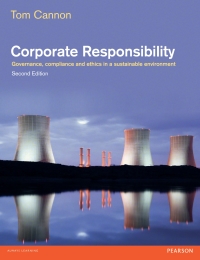Question
Question 1. Ski Slope had arranged, when it initially planned its spending plan, to purchase its counterfeit ice for $10/per kg. Notwithstanding, because of ensuing
Question 1. Ski Slope had arranged, when it initially planned its spending plan, to purchase its counterfeit ice for $10/per kg. Notwithstanding, because of ensuing developments in innovation, makers cut their costs to $9.70 per kg. what's more, this figure is presently viewed as an overall market cost with the end goal of execution appraisal for the spending time frame. The real cost paid was $9.50, as the Ski Slope acquirement division haggled unequivocally at a superior cost. The other data identifying with that period were as per the following:
Unique Standards (ex-ante)5,500 units 5 Kgs. $10 $2,75,000
Revised Standards (ex-post)5,500 units 4.75 Kgs. $9.70$2,53,412.50
Actual (5,500 units)27,225 Kgs. $9.50$2,58,637.50
Required
(i) CALCULATE the fluctuations for 'Ice' by
(a) Traditional Variance Analysis; and
(b) An approach which recognizes Planning and Operational Variances.
(ii) INTERPRET the outcome.
Answer all the MCQ in proper sequence in reference to managerial accounts:
2. That there is no corporate expense' is accepted by:
(a) Net Income Approach,
(b) Net Operating Income Approach,
(c) Traditional Approach,
(d) All of these.
3. That individual influence can supplant corporate influence' is expected by:
(a) Traditional Approach,
(b) MM Model,
(c) Net Income Approach,
(d) Net Operating Income Approach.
4. Which of the accompanying contends that the estimation of turned firm is higher than that of the unlevered firm?
(a) Net Income Approach,
(b) Net Operating Income Approach,
(c) MM Model with charges,
(d) Both (a) and (c).
5. In Traditional Approach, which one is right?
(a) ke rises continually,
(b) kd diminishes continually,
(c) k0 diminishes continually,
(d) None of the abovementioned.
6. Which of the accompanying accepts steady kd and ke?
(a) Net Income Approach,
(b) Net Operating Income Approach,
(c) Traditional Approach,
(d) MM Model.
7. Which of coming up next is valid?
(a) Under Traditional Approach, generally speaking expense of capital remaining parts same,
(b) Under NI Approach, generally speaking expense of capital remaining parts same,
(c) Under NOI Approach, by and large expense of capital remaining parts same,
(d) None of the abovementioned.
8. The Traditional Approach to Value of the firm m that:
(a) There is no ideal capital construction,
(b) Value can be expanded by reasonable utilization of influence
(c) Cost of Capital and Capital construction are m scratch,
(d) Risk of the firm is free of capital construction
9. A firm has EBIT of Rs. 50,000. Market estimation of obligation is Rs. 80,000 and by and large capitalization rate is 20%. Market estimation of firm under NOI Approach is:
(a) Rs. 2,50,000,
(b) Rs. 1,70,000,
(c) Rs. 30,000,
(d) Rs. 1,30,000.
10. Which of coming up next is wrong for NOI?
(a) k0 is steady,
(b) kd is steady,
(c) ke is steady,
(d) kd& k0 are steady.
11. Which of coming up next is mistaken for estimation of the firm?
(a) In the underlying relational word, MM Model contends that worth is free of the financing blend.
(b) Total estimation of turned and unlevered firms is in any case exchange will occur.
(c) Total worth fuses borrowings by firm however prohibits individual getting.
(d) Total worth doesn't change on the grounds that fundamental doesn't change with financing blend
Step by Step Solution
There are 3 Steps involved in it
Step: 1

Get Instant Access to Expert-Tailored Solutions
See step-by-step solutions with expert insights and AI powered tools for academic success
Step: 2

Step: 3

Ace Your Homework with AI
Get the answers you need in no time with our AI-driven, step-by-step assistance
Get Started


